

Table of contents
- colisepticemia
- mange mites
- avian tuberculosis
- chicken sniffles
- coccidia
- Marek's disease
- mycoplasmosis
- Newcastle disease
- Red mite
- bird flu
- worms
- frequently asked Questions
Chickens are low-maintenance animals, but they are not immune to diseases. Parasites, viruses or bacteria can cause them problems and serious illnesses are even notifiable. Here you will find the most common chicken diseases with symptoms and pictures at a glance.
colisepticemia
This bacterial chicken disease is difficult to recognize because the causative bacterium Escherichia coli always found in small amounts in the intestinal tract of chickens. Both young and older chickens are affected.
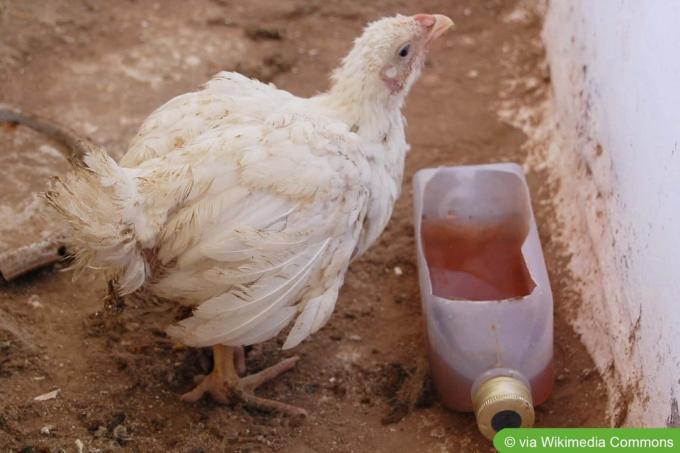
symptoms
- Inflammation of the pericardium, air and yolk sacs and fallopian tubes
- growth disorders
- Apathy and ruffled feathers
- early mortality
Treatment
Good hygiene in the barn and regular deworming help to prevent colisepticemia. For older chickens there is the possibility to protect them with a vaccination. Acutely affected animals can be treated with an antibiotic. Due to the high mortality rate, it often makes more sense to save the animals before they have to suffer for a long time.
mange mites
This is a parasitic chicken disease. Foot mange mites nest in the top layer of skin on chicken legs. The legs become whitish and a thick bark develops. Therefore, this chicken disease is often referred to as "calcified legs".
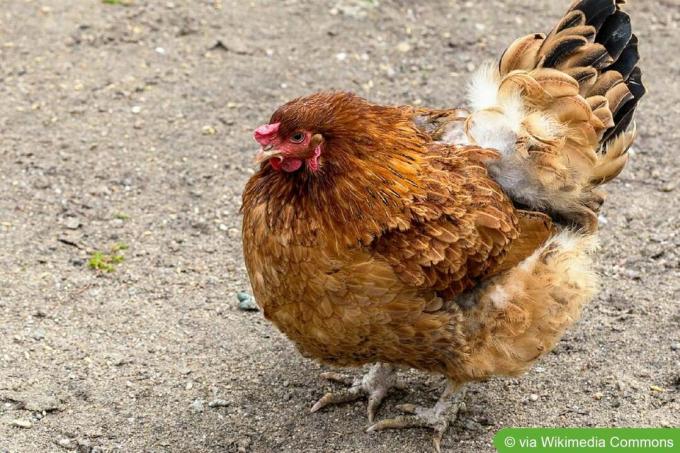
symptoms
- Legs get fatter
- problems walking
Treatment
You should first thoroughly clean the coop and treat it with heat, which will kill the mites. The animals' feet are softened with a soft soap solution and then treated with an anti-mite agent. The softening allows the anti-mite agent to penetrate the crusty skin better.
avian tuberculosis
Avian tuberculosis is triggered by the bacterium Mycobacterium avium. One problem with this bacterial chicken disease is that the pathogen can survive for years and repeatedly infect animals. For this reason, the disease is notifiable.
symptoms
- Decrease in chest muscles
- general malaise
Treatment
There is no treatment for avian tuberculosis. The animals die from internal bleeding. To get rid of the disease only helps to kill the entire stock and create a new flock, after the entire area where the chickens have been cleaned and disinfected became. Chicken keepers can get a test from veterinarians to be able to diagnose the disease in good time.
chicken sniffles
The trigger of this bacterial chicken disease is the bacterium Avibacterium paragallinarum. The disease is contagious and it is advisable to treat the entire flock preventively, even if individual animals are not yet showing any symptoms.
symptoms
- swollen sinuses
- inflamed conjunctiva
- nasal discharge
- beak breathing
- reduced laying performance
- loss of appetite
- Animals have fallen asleep
Treatment
- barn or Keep litter dry
- Avoid drafts
- Treatment with antibiotics by the veterinarian
Tip:
Comprehensive hygiene measures are an important part of treatment and prevention. Clean and disinfect the stall on a regular basis.
coccidia
Coccidia mainly attack young poultry or Chick. The parasites settle in the intestines, causing problems with the absorption of nutrients.
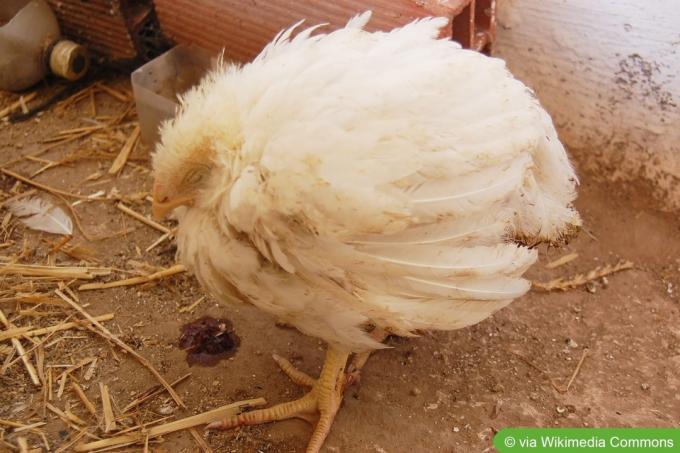
symptoms
- weight loss
- Diarrhea
- blood in the feces
- fluffed plumage
Treatment
Mortality, particularly in chicks, is high. On average, 80% of the pups do not survive, which is why prompt treatment is necessary.
- separate animals
- Medication by a vet is mandatory
Marek's disease
Marek's disease affects chicks up to 13 weeks of gestation. life week. Occasionally older animals are affected by the viral disease. However, the mortality rate decreases sharply with increasing age.

symptoms
- movement disorders
- signs of paralysis
- strong weight loss
- pustular skin changes
- tumor-like growths on internal organs
Treatment
Marek's disease is notifiable. There is currently no treatment for this viral infection. It is possible to vaccinate chicks against it in the first days of life.
mycoplasmosis
Mycoplasmosis primarily affects chickens whose immune systems have already been compromised by another disease. The bacterial chicken disease is favored by poor hygiene and stress in the barn.
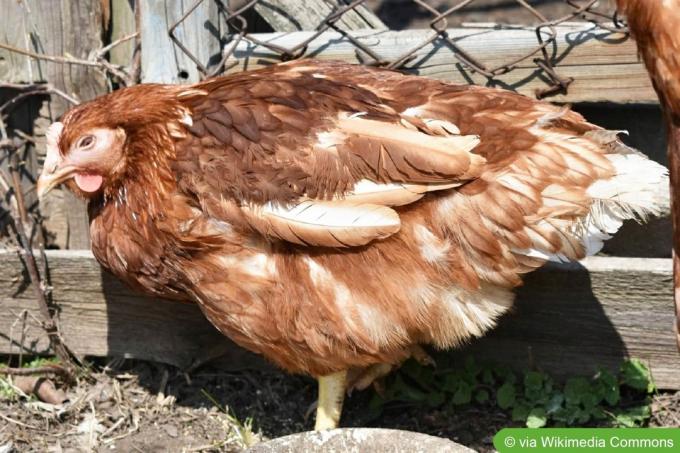
symptoms
- inflamed conjunctiva
- nasal discharge
- eye discharge
Treatment
Treatment of mycoplasmosis with medication is usually not necessary. Pre-existing conditions are primarily treated and hygiene improved. Also, try to keep the stress on the animals as low as possible. A larger flock is separated, allowing the animals to relax and recover faster.
Newcastle disease
Newcastle disease occurs mainly in private chicken farmers, as they prefer not to vaccinate their animals. There is no treatment for the viral disease because the animals die within a few days. This chicken disease is also notifiable and in the event of an outbreak, the authorities will order the entire flock to be killed to prevent it from spreading.
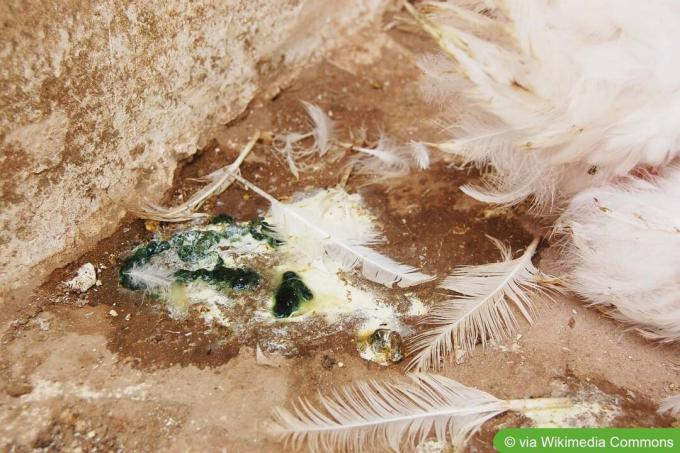
Source: Lucyin, Fasse pesse des poyes vete schite, Edited by Home Garden, CC BY-SA 4.0
symptoms
- apathetic behavior
- loss of appetite
- (greenish) diarrhea
- shortness of breath
- dark colored crest
A notice:
To avoid financial damage and possible penalties, you should always have your chickens vaccinated.
Red mite
Fowl red mite (Dermanyssus gallinae) is a parasite that often infests chickens that are weakened by bacterial or viral infestations. The mites are difficult to find because during the day they hide in the cracks of laying nests or perches.
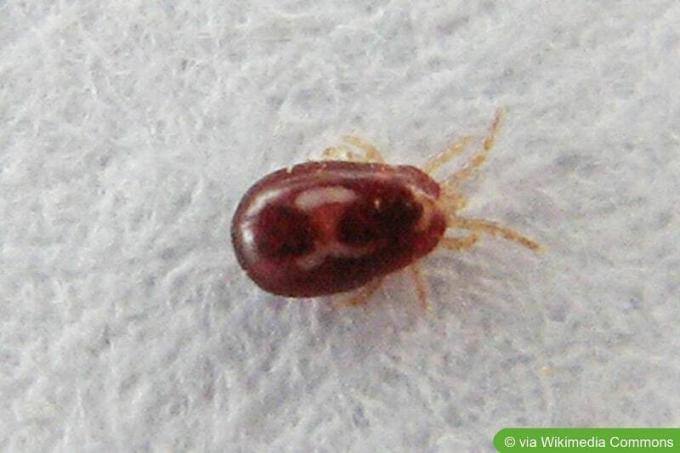
symptoms
- unrest in the stable
- feather pecking
- cannibalism
- Drop in performance when laying
- Blood spatters on eggshells
- flabbiness
Treatment
Mites are contagious and can quickly spread throughout the barn, so you should act quickly:
- thermal treatment of the rooms with hot air or flaming (temperature over 60 °C)
- Treatment of the animals with a suitable anti-mite agent from the veterinarian
Mites are often introduced through the purchase of pullets or chicks from purchased hatching eggs. Before introducing such animals into the flock, they should be kept in a separate area for at least three to four weeks. Check the chickens for diseases and parasites daily to avoid introduction.
bird flu
Poultry farmers are now confronted with bird flu and the preventive protective measures almost every year. The risk of infection is particularly high in spring, when migratory birds return from their winter quarters. For this reason, both commercial and private keepers in the endangered regions are obliged to keep poultry in stables. If there is a free run, then this must be designed in such a way that any contact with wild birds is excluded.

symptoms
- indifference
- loss of appetite
- Fever
- shortness of breath
- reduced laying performance
Treatment
The mortality rate from bird flu is high. There is an obligation to report this disease under the Animal Diseases Act. If a chicken in the herd tests positive for bird flu, no treatment is given and the chickens are killed in an animal-friendly manner. In addition, a protection zone is set up around the affected barn to prevent it from spreading.
worms
There are different types of worms that can affect chickens. As a result, the symptoms can vary. However, the treatment of the parasites is always the same: the barn is thoroughly cleaned and the veterinarian treats the animals against worms.
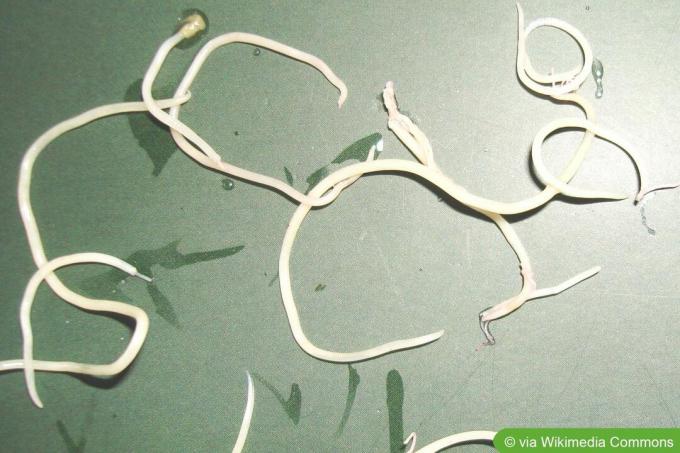
Source: Chhandama, Ascaridia galli, Edited by Home Garden, CC BY-SA 3.0
symptoms
- shaggy plumage
- Diarrhea
- reluctance to eat
- shortness of breath
- frequent secondary diseases due to weakening of the immune system
Worms are highly contagious, so you should separate animals that appear sick from the flock. Transmission can not only take place through farm animals, wild birds, which can also be at the feeding station or in the outdoor area, can bring in the worms.
A notice:
To prevent worm infestation, you should regularly deworm your chickens under the supervision of a veterinarian.
frequently asked Questions
The first sign that something is wrong is a change in the animal's behavior. It appears lethargic, separates itself from the group, and consumes less food and water than usual. In hens, the laying performance often decreases. You should consult the veterinarian at the latest if you experience symptoms such as sneezing, breathing difficulties and/or diarrhea.
Yes, some diseases can be transmitted to humans, mostly in people who already have a weakened immune system. An example of a disease that can be transmitted to humans is avian tuberculosis.
Chicks should be taken to the vet every two to three weeks for the first two to three months of life. With increasing age, the frequency of visits to the vet can be reduced. Adult chickens should be examined by a veterinarian on a quarterly or semi-annual basis. How high the frequency is depends on the size of the group. Larger flocks of poultry should be visited by the vet more frequently. Necessary vaccinations as well as preventive therapies such as deworming can be carried out in the course of the vet visits.
 Mirko
Mirko
Learn more about pets

Chicken twists its head: what does that mean?
When chickens suddenly tilt their heads, there is usually a serious reason behind it. Here you can find out what can be responsible and what action should be taken if a chicken turns its head.

Chicken tilts to the side: balance disorder?
Keeping chickens in your own garden is becoming increasingly popular. All you need is enough exercise and a winter-proof stable. Unfortunately, chickens are not the most robust creatures. For example, if a chicken repeatedly falls to the side, it can be due to an imbalance, but it can also be worse.

Bird Names: 348 Popular Budgie Names
If you have budgies as pets or are planning to get two parakeets, the exciting task ahead of you is naming them appropriately. In this text you will be presented with various budgie names to help you choose of a name that suits both your feathered friend and your personal taste fits.

441 guinea pig names from cute to funny
A suitable guinea pig name can not only be a fun or cute addition, but also a way to create a special bond with your little furry friend.

Turtle Names: 473 Names for Turtles
Finding an appropriate name for your turtle can be a fun and meaningful task. A well-chosen turtle name can underline your friend's personality and uniqueness and create a special bond between the two of you. Whether you're looking for male, female, or gender-neutral names, you'll find a wide range of names for your […]
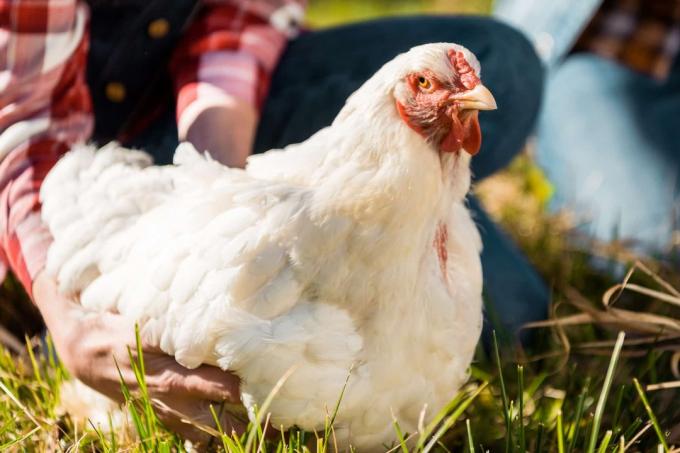
Chicken can no longer walk: what to do?
A chicken is more likely to become unable to walk, limp, weak on its feet, or sag its hindquarters. Then you need to research the cause in order to be able to react correctly.



